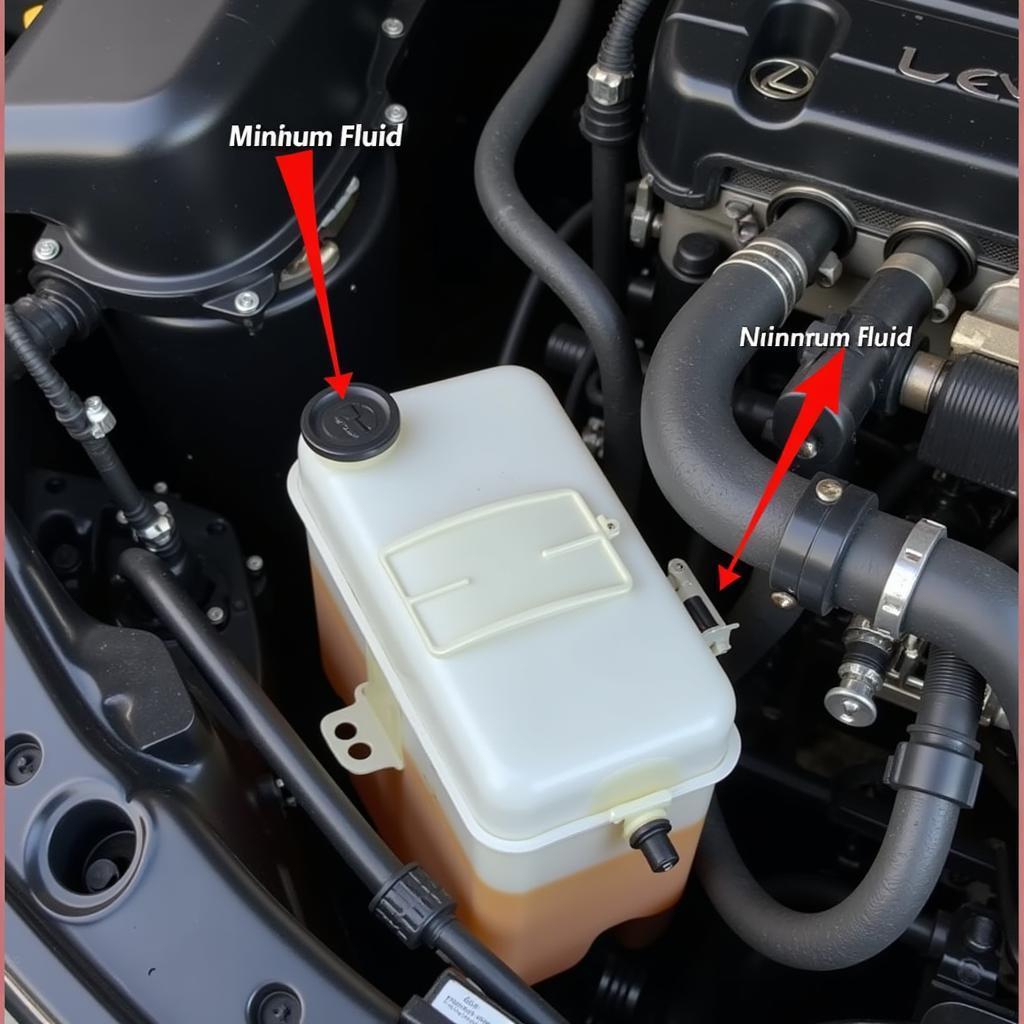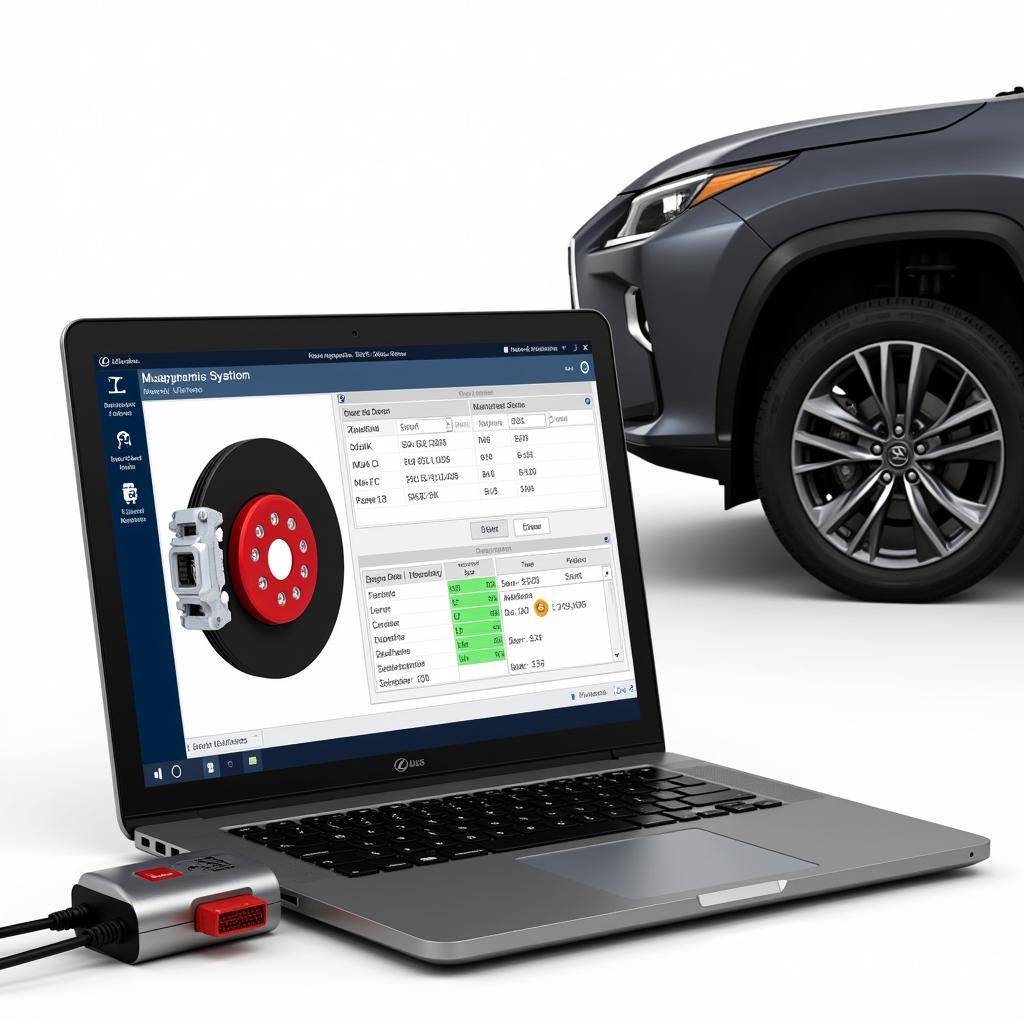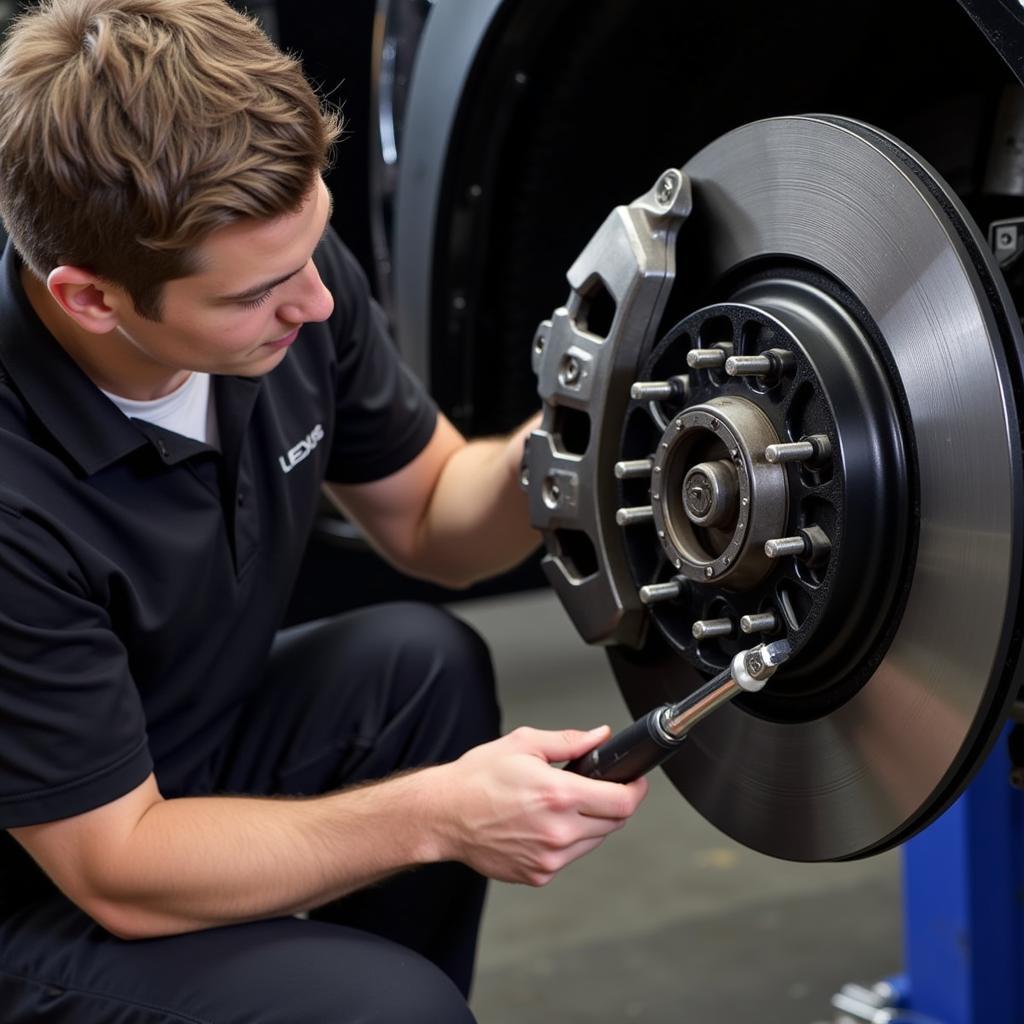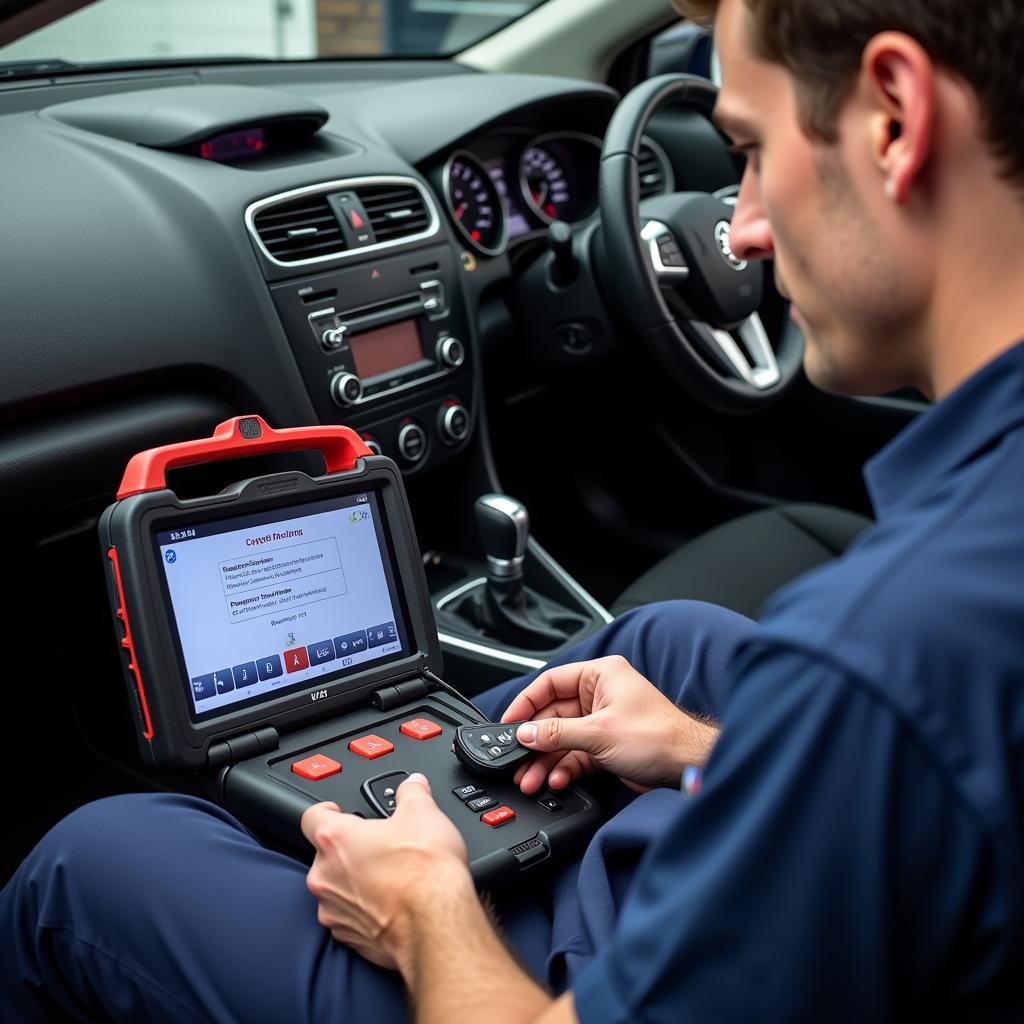The lexus brake system warning light on your dashboard can be a cause for concern. This article provides comprehensive information to help you understand the various reasons why this light might illuminate and offers practical solutions, including remote software diagnosis, programming, and installation for effective troubleshooting. Let’s dive in and understand what could be triggering this warning and how to address it.
A persistent brake warning light can indicate a number of issues ranging from low brake fluid to more serious problems with your Lexus’s braking system. Ignoring this light can compromise your safety and lead to costly repairs down the line. Don’t worry, understanding the potential causes can help you take the right steps. You may even find yourself resolving the issue without a trip to the mechanic. For a slightly different issue, check out our guide on the 2011 Subaru Outback brake warning light.
Understanding the Lexus Brake System Warning Light
The brake warning light is a critical safety feature in your Lexus. It serves as a visual alert, notifying you of potential problems within the braking system. While it can be alarming to see this light, understanding its different meanings can help you assess the urgency and take appropriate action.
Common Causes of the Lexus Brake System Warning Light
There are several reasons why your Lexus brake system warning light might be on. These range from simple fixes to more complex issues requiring professional attention. Here are some of the most common causes:
- Low Brake Fluid: This is often the most common culprit. Brake fluid levels naturally decrease over time, but a significant drop can indicate a leak in the system.
- Worn Brake Pads: Brake pads have a finite lifespan and need to be replaced regularly. The warning light often signals that the pads have reached their wear limit.
- Faulty Brake Sensor: A malfunctioning sensor can trigger the warning light even if there’s no actual problem with the braking system.
- Issues with the ABS (Anti-lock Braking System): The ABS system plays a crucial role in preventing wheel lockup during hard braking. A light could indicate a problem within this system.
- Parking Brake Engaged: Sometimes, the simplest explanation is the correct one. Make sure the parking brake is fully disengaged.
After checking the simpler issues, you might find resources related to other car models helpful, such as this article about the 2006 Subaru Outback brake warning light on.
Troubleshooting the Brake Warning Light
Before rushing to a mechanic, you can perform some basic checks yourself:
- Check the Parking Brake: Ensure the parking brake is fully released.
- Inspect Brake Fluid Level: Locate the brake fluid reservoir and check the fluid level. If it’s low, top it off with the recommended brake fluid type.
- Visually Inspect Brake Pads: If you’re comfortable doing so, visually inspect the brake pads for wear. Thin pads indicate the need for replacement.
 Checking Lexus Brake Fluid Level
Checking Lexus Brake Fluid Level
Remote Diagnostics and Software Solutions
In today’s technologically advanced vehicles, remote diagnostics and software solutions play an increasingly important role in troubleshooting. We specialize in providing remote software diagnosis, programming, and installation services to address various car issues, including brake system problems.
By utilizing cutting-edge diagnostic tools and software, we can remotely access your Lexus’s onboard computer system and pinpoint the exact cause of the brake warning light. This can save you time and money compared to traditional diagnostic methods. Sometimes, a simple software update or recalibration can resolve the issue without any physical intervention. You might also find the information regarding the 2014 Subaru Outback brake warning light flashing relevant to your situation.
 Remote Diagnostics for Lexus Brake System
Remote Diagnostics for Lexus Brake System
When to Seek Professional Help
While some brake warning light issues can be addressed with simple DIY solutions, others require professional attention. If you’ve performed basic troubleshooting steps and the light remains on, it’s essential to seek the expertise of a qualified mechanic. Ignoring a persistent brake warning light can lead to serious safety risks and potentially costly repairs down the road. It’s also helpful to be aware of issues in other car models, such as the information about the 2010 Subaru Outback brake warning light.
“Regular brake system maintenance is crucial for ensuring your safety on the road,” advises John Miller, a certified automotive technician with over 20 years of experience. “Addressing brake warning lights promptly can prevent minor issues from escalating into major problems.”
 Professional Lexus Brake System Inspection
Professional Lexus Brake System Inspection
Conclusion
The lexus brake system warning light is a vital safety indicator, and understanding its potential causes is crucial for maintaining your vehicle’s braking performance. By following the troubleshooting tips in this article, you can often identify and address simple issues yourself. However, for more complex problems, remember to seek the expertise of a qualified mechanic. Don’t delay addressing this critical warning for your safety and the longevity of your Lexus. For general information on Subarus, this article about the Subaru Outback brake warning light flashing could be useful.
FAQ
- What does it mean when the Lexus brake warning light is flashing? A flashing brake light usually indicates a more serious problem, often related to the ABS system.
- Can I drive my Lexus with the brake warning light on? While you might be able to drive short distances, it’s highly recommended to avoid driving with the brake warning light on and address the issue promptly.
- How often should I check my Lexus’s brake fluid level? Checking the brake fluid level every month is a good practice.
- How much does it cost to replace brake pads on a Lexus? The cost varies depending on the model and the type of brake pads used, but it typically ranges from $150 to $300 per axle.
- How can remote diagnostics help with brake system issues? Remote diagnostics can pinpoint the exact cause of the warning light, potentially saving time and money on unnecessary repairs.
- What are the signs of worn brake pads? Signs include squealing or grinding noises, a spongy brake pedal feel, and reduced braking performance.
- Is it safe to top off brake fluid myself? Yes, as long as you use the recommended brake fluid type and avoid overfilling.
“Don’t underestimate the importance of a functioning brake system. Regular maintenance and prompt attention to warning lights are essential for your safety and the safety of others on the road,” adds Maria Sanchez, a leading expert in automotive safety systems.

